KEYS MORSE story
I like the Morse and I am a small keys collector.
I must have approximately 20 parts which come from second hand trades or friends gifts.
They all are restored and operational. I hope one day to increase this collection.
Three keys never leave me during my displacements for my UNO missions in the world.
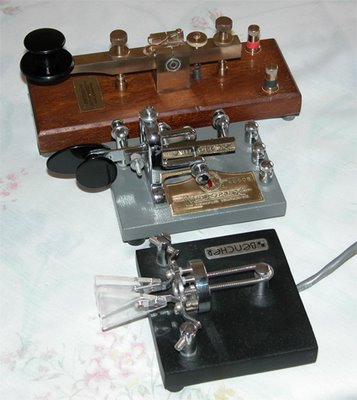
A old one, a vibroplex, and a bencher. Here in Kinshasa, (the old model is from KENT. This English company manufactures precision Morse keys), and the vibroplex are on the top of my TV, because I like to see them, to touch them each day. (2nd love hi),
Bencher, I use it during my current QSO’s under 9Q1EK. The remainder of my collection is at Montreal, with my daughter VE2MNS.
I received one day by the fast mail from Japan an old Morse key that was used during the second world war. It was a great surprise for this formidable gift.
I was never as much happy to see an old key in perfect condition especially from Japan because it is easier to find US keys or from Europe, but really rarer from the Asian side, Eastern Europe and Oceania.
My first CW QSO were with J38 in 1971 (FK8KAA).
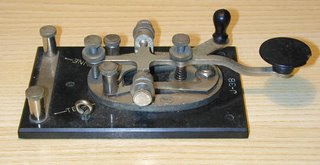
A few months after, with a little more experiment and of morse drive. HI, that did not go rather quickly! I built a double contact with a blade saw…
I do not have unfortunately this key because I left it to the friends of the club.
Really easy to realize! Some parts of metal, the contacts GOLD of relay on the other, blade saw on the two side contacts. It was the big foot for me.
I’d moved after the blade saw to the JI36 semi automatic made by The Lionel Company. During World War Two, the Lionel Electric Train Company made thousands of copies of the #6 Lightning Bug for the U.S. Army.
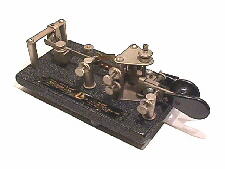
The JI36, having a flexibility in use with the adjustment of the weight part, giving a quality, a “key” of easily recognizable personal handling according to the operators.
With electronics this “personalization” is less obvious, but can be still made different manner.
I also tested a Japanese key, Hi mound (BK100),
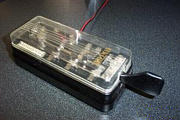


My preferred during long years was the Vibroplex double paddles.

After all that. I have moved to the electronics keyer.
I built in the 1984 from a 8044 curtis, a small electronics driven by the vibroplex key.
Other models followed… while adding there memories type 21L02.
Today, still in 9Q, I use also this homemade electronic version that goes back in 1987. Hi, and during the contests with 4 selective memories. Two, can be put together for the long messages.

With the Bencher, that I also like, at the time, the QSJ was high for me, I made the plans (being a also laboratory metrologist background, it was easy to make it…).
Then two exact copy of bencher keys BY1 models were born with the assistance from some Ham friends being in the precision mechanics.
I never tested Schurr key, I think that I lost something, but it is not too late yet. One day will come.
After thus, a few 5 years of interruption of CW QSO, I take again that since Kinshasa 9Q1EK and with a great pleasure!!
With all the viruses which trail, the Morse virus is less dangerous Hi!
Soon, it will be necessary that I have a better accessories because during many Pile-up has each time I launch a CQ under 9Q1EK with a system more serious than mine.
Easier, to use with memories buttons near the key.
I think to test one day the MFJ-490. .
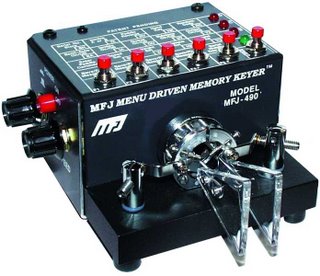
Earlier, I think to test also, the Super Combo Keyer uses by Bernie, ZS4TX,
http://www.zs4tx.co.za/sck/
Equipped for the SO2R and with the memories, easier to use and more recent than my old electronics keyer …
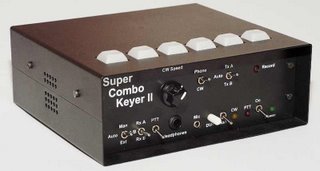
9Q1EK December Station 2006-12-23 Homemade 1984, Electronic keyer just under the TRX (aluminum plate).
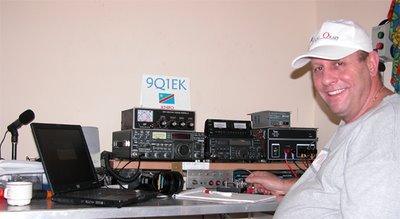
My next dream is for Begali keys
Thus has soon, the pleasure of hearing you in CW and to add 9Q1 on your log.
- -… … - - de Georges, 9Q1EK / VE2EK / ZS1II
